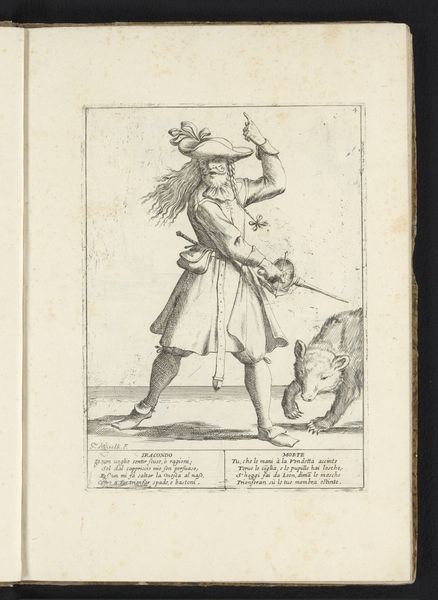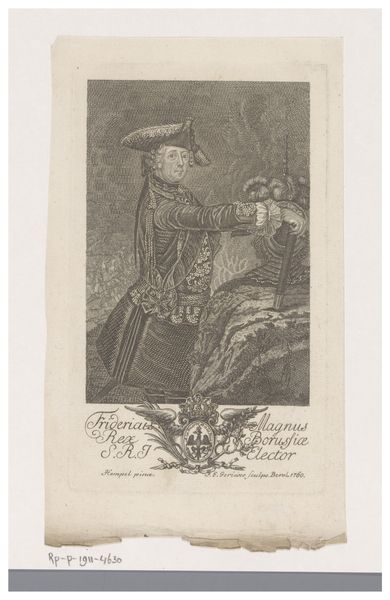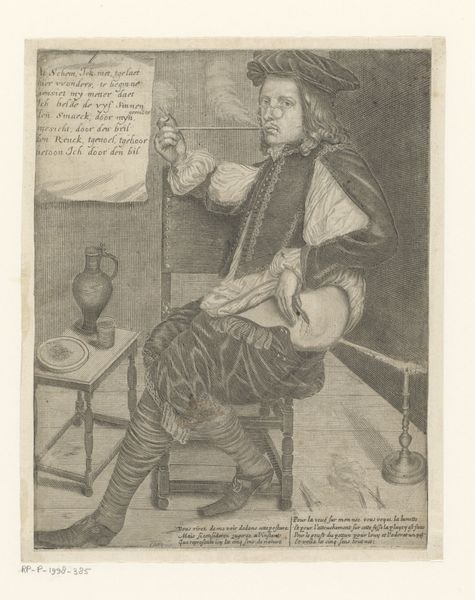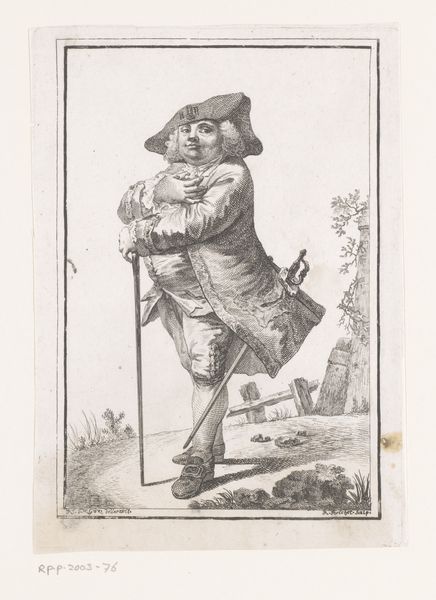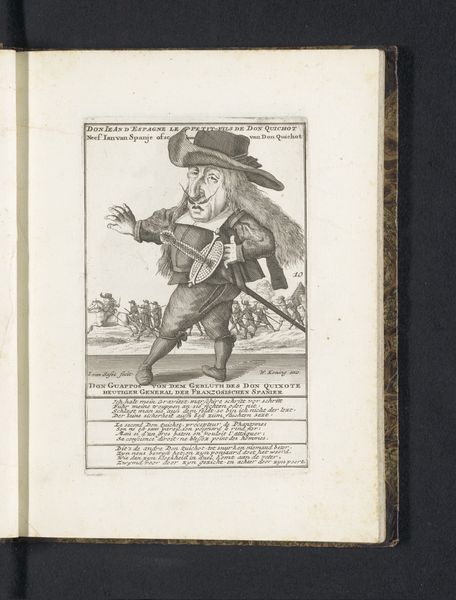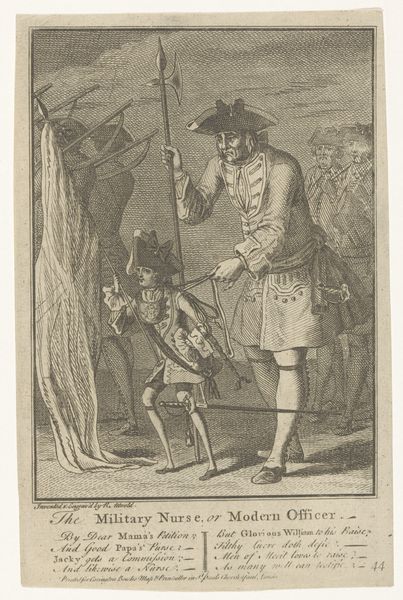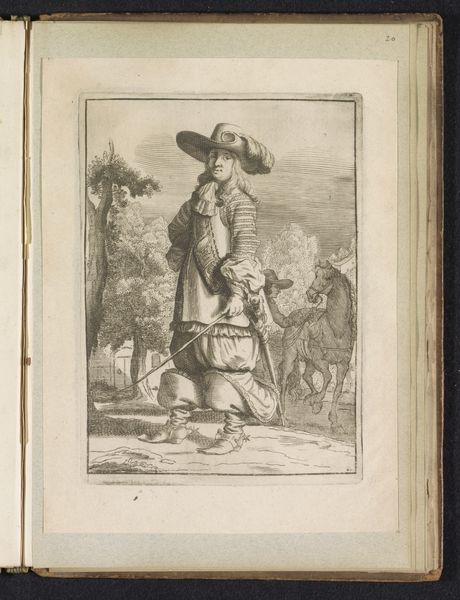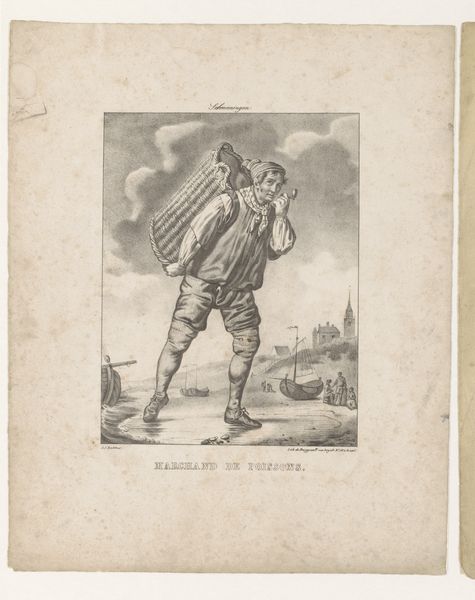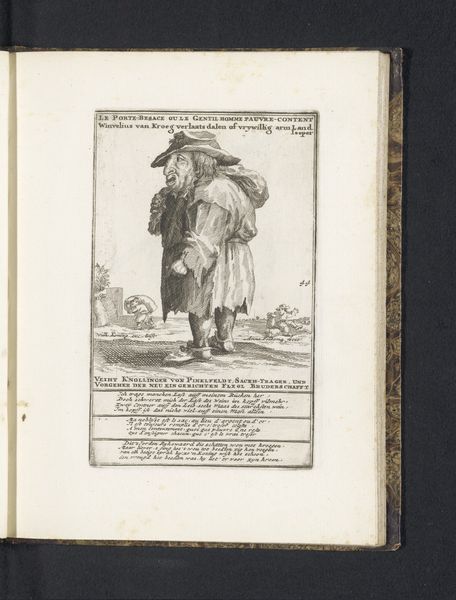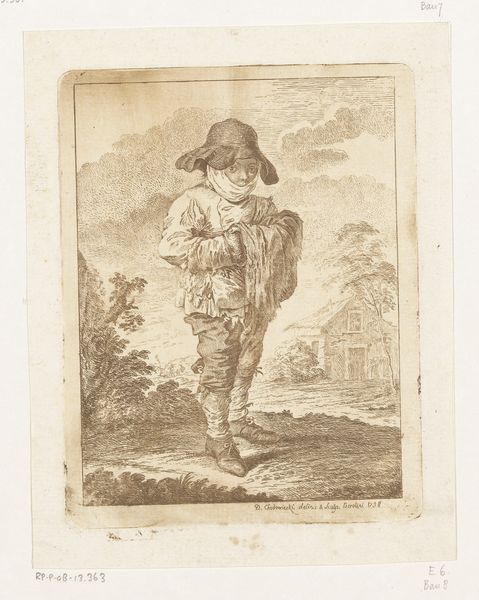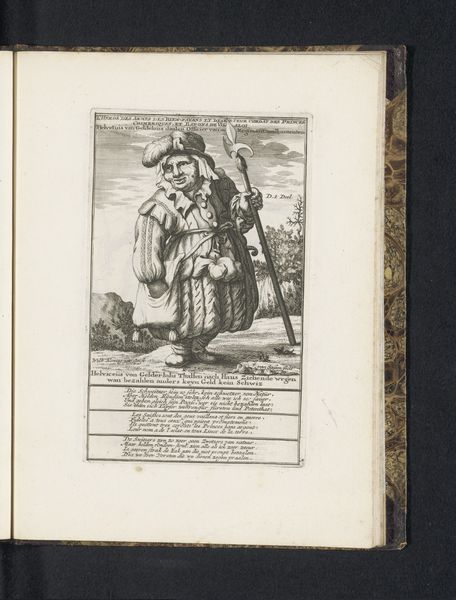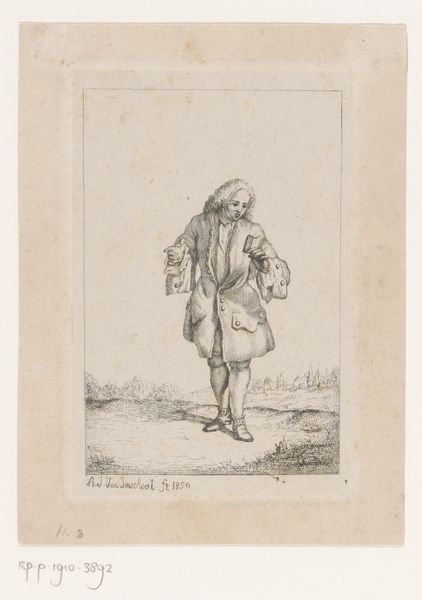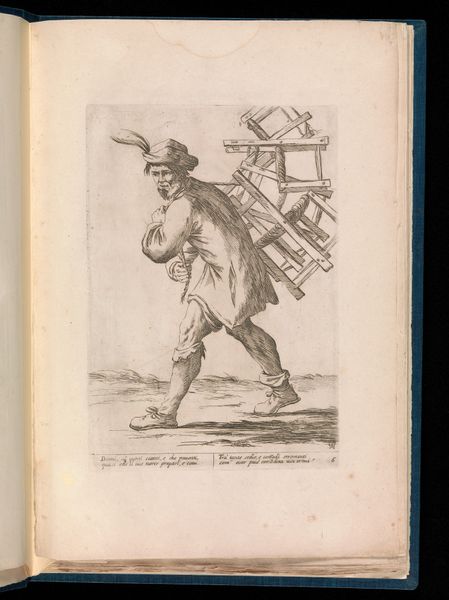
print, paper, engraving
#
portrait
#
neoclacissism
# print
#
paper
#
history-painting
#
engraving
Dimensions: height 155 mm, width 93 mm
Copyright: Rijks Museum: Open Domain
Editor: This is "Portret van Frederik de Grote," created in 1763 by Johann Ernst Gericke. It’s a print, an engraving on paper, and it strikes me as quite formal and very much a product of its time. How do you interpret this work? Curator: Absolutely. Its Neoclassical style places it firmly within the 18th-century aesthetic. Think about the political climate; Frederick the Great sought to project an image of enlightened leadership. What do you notice about the objects included and their positioning? Editor: I see him gesturing, with a battle scene faintly visible in the background. There’s a crown near his hand, suggesting authority. The inscription below… is that German? Curator: Indeed. It speaks to his greatness, implying history, truth, the world, and posthumous fame are not enough to fully praise him. This wasn't just about individual likeness, but the carefully managed construction of a ruler's public persona, designed for wide circulation and intended to reinforce his power. Editor: So, this engraving served a propagandistic purpose, shaping public opinion and bolstering his image? Curator: Precisely. Prints were key for disseminating information and constructing authority across social strata, even beyond national borders. How do you think the rise of the museum also played a role in how these sorts of artworks were understood? Editor: Good point. With museums becoming more prominent, perhaps artworks like this one began to be seen less as political tools and more as historical documents, things to be analyzed and appreciated aesthetically, not just believed? Curator: Exactly. The meaning shifts depending on the social context and where and how it's consumed. Looking at this portrait now, it reminds us how much imagery can be engineered and manipulated within historical contexts. Editor: It’s fascinating to consider the political and social forces intertwined with even seemingly straightforward portraiture. Thanks! Curator: A worthwhile consideration to take with any museum object.
Comments
No comments
Be the first to comment and join the conversation on the ultimate creative platform.
